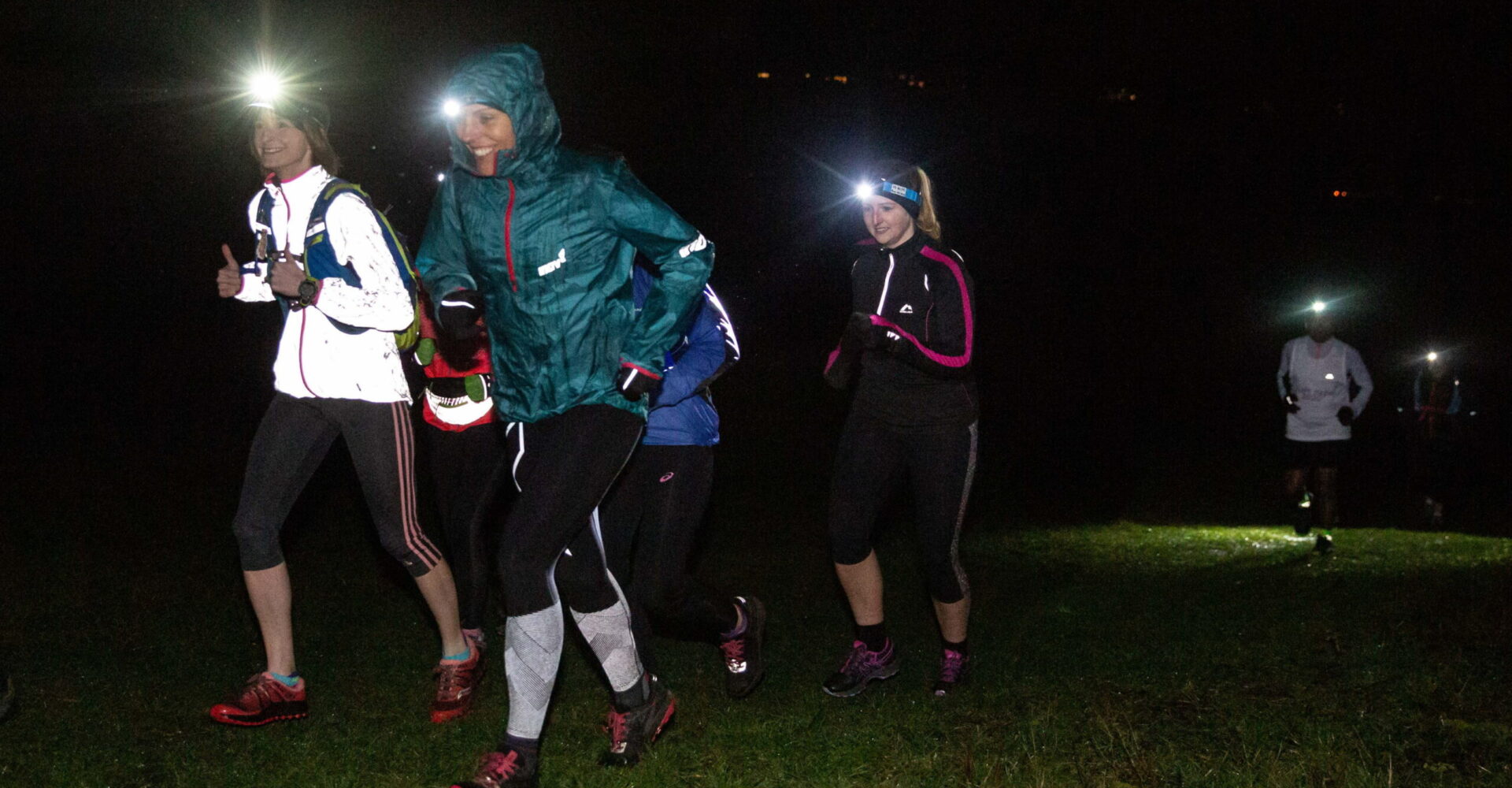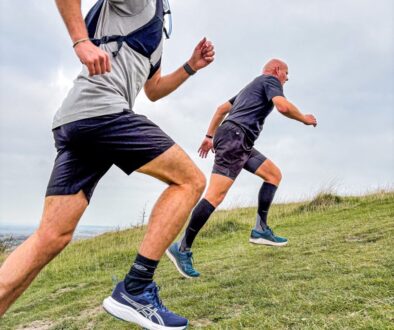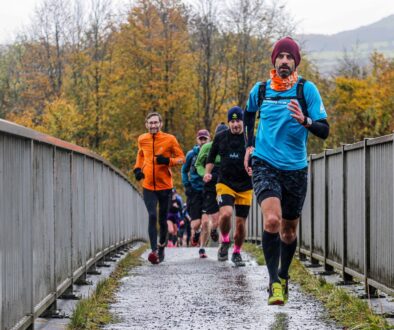Running at night is unavoidable in the winter months and is a feature of many races and running events. Here we unpack how to run confidently at night as well as some of the great training opportunities it can provide!
Why run at night?
Most people will find themselves in this situation, because of their situation. If you live in the UK, at the winter solstice you only have 7hrs and 49 minutes of daylight!! Maybe you want to take part in an event that has a night section or perhaps you want to hone your proprioception and have a bit more of an adventure on night-time trails. Running at night can make you a better runner and if you are going to be running a multi-day event or ultra that has a night section then it’s something you need to practice beforehand.
I’ll never forget the long nights of the Marathons des Sables, with the beauty of the starry nights or the Ultra Trail du Mont Blanc and the hypnotic hallucinations!! Even for those everyday routes, running at night will also help you see another side to where you live, making the boring much more exciting.
So, running at night can certainly inject a bit of adventure into those trails. Not only that but what an opportunity to see some wildlife. Dusk and dawn are great times to see and hear a lot of wildlife. Next time you are out on the trails, in the middle of your run, just stop for a few minutes and listen to the environment around you, even in an urban environment you are likely to make out the blood curdling scream of a fox calling.
The Challenges
There are many good reasons why many of us don’t want to go out at night! The most obvious is that it’s more difficult to see! This leads to the challenge of identifying trip hazards as well as low hanging branches which seem to appear out of nowhere. By not having the sun in the sky, it’s naturally cooler. Now we get onto the fear factors! That feeling of being alone is emphasised, add to that anxiety or fear of the dark, night running can feel more intimidating.
Natural Reactions
The mind can play tricks on many aspects of night-time, from the passage of time, to how we perceive objects. Often objects, such as trees and shrubs will appear bigger in the dark. Also, other senses might become heightened such as hearing. Running with a head torch will also affect how we see, often leaving us with tunnel vision and an inaccurate depth perception. The military spent many hours and lots of money on working out the dark affects troops in the dark from morale, to perceiving distances and objects. It makes for fascinating reading. One other key thing that we do as runners is to run more slowly and naturally shorten our stride, which can be used to improve technique, but it’s certainly worth bearing in mind if you are planning a route in the dark that it will take longer than it would during the daytime.
Our top 7 tips for running at night
Pulling together both the challenges and our natural reactions let’s look at 7 top tips we can put into practise to make running at night fun and safe.
1. Become more stable
Lower your sense of gravity by softening your knees and ankles. Shorten your strides and be ready to throw your arms out for balance. Don’t forget to pick your feet up, toes shoe pointed slightly up or at last flat. That way you can deal better with that uneven ground or trip hazard. Not only this but you’re also working on better running form.
2. Start slow
It’s a natural reaction but it’s also worth just taking the foot of the accelerator especially on an unfamiliar trail. That way you will have more time to develop your approach to the trail. Once you have honed your technique and knowledge of what’s ahead you can pick up the gears and go quicker, developing your agility, reaction times and proprioception. Do also be aware that if you are afraid then it’s likely you will be wanting run quickly, hence those Hollywood movies where people running away from the knife wielding bad guy and tripping over a leaf! Don’t be that person! A recce of the route in daylight will also help eliminate some of the unknown and your fears.
3. Increase your awareness
Remain alert. For headphones, use on low volume or use bone conductor headphones. You need to be aware of what’s going on all around you, from feet to the top of your head. Sweeping with your head torch will also help prevent the tunnel vision that can develop from long night time runs. Think peripheral, maybe the head torch isn’t quite needed yet, it’s that weird dusky light where it’s tricky to make out objects. The best technique is not to look directly at the object but to look just off from it, using your peripheral vision. A technique used in the military.
4. Hot up on your skills
Plot the run on a navigation app. You should know where you are always on the trail, depending on what you are doing, take a map, compass or GPS and ensure that you have planned the route and know ways of cutting in short in case you need to get back sooner. If you need to learn more about navigation, then book a session with Run the Wild. Learn about local wildlife so maybe that screaming you heard the other time on the trail you will identify is just a fox call and not your worst nightmare.
5. Layer up
It gets colder at night, but often your body clock will naturally slow down at night, so put on some extra layers and pack something extra in your running pack. Consider wearing some bright clothing, this will make it safer for you and also any of those other crazy night time runners.
6. Get some good lighting
Invest in a good head torch, if you need any help, check out the buying guide here. Make sure that the battery power will last the length of the run, very few will last much more than a couple of hours on maximum output, so consider a spare battery, or a backup. One way of increasing depth perception and removing tunnel vision is by using a hand-held torch in conjunction with your head torch. This way two sources of lights generate different shadows and lighting and help perspective. Give it a go and see what works best for you. Also consider moving your head torch to around your waist or sternum.
7. Safety first
This is key! Don’t be scared, think smart. Run with a friend, run with a group, run with Run the Wild! Whatever you do let someone know where you are going and when you expect to be back. Pack a fully charged phone and keep safe out there.
Conclusion
Trail running at night doesn’t have to be something to be feared or a necessary discomfort, it can be by its very nature an adventure and not only that but make you a better trail runner.
Safe and fun trails folks!



